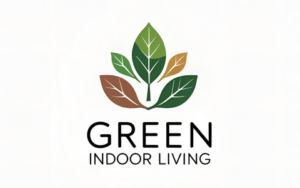If you’ve ever tossed food scraps in the trash and thought, “There has to be a better way,” you’re in the right place. Composting is an easy, eco-friendly way to reduce waste and give back to the earth. But should you compost indoors or outdoors? Let’s break it down so you can pick the best method for your home and lifestyle.
What Is Composting?
Composting is nature’s way of recycling. It’s the process of breaking down organic waste (like food scraps and yard clippings) into nutrient-rich soil. Tiny organisms, oxygen, and moisture work together in the decomposition process to turn waste into compost. The key to successful composting? The right carbon-to-nitrogen ratio, moisture content, and temperature control to keep everything breaking down properly.
Indoor Composting: The Basics
Not everyone has a backyard, and that’s okay! Indoor composting is a great option for apartment dwellers, city folks, or anyone who wants an easy way to compost year-round.
Types of Indoor Composting
Vermicomposting (Worm Bin) uses worms to break down kitchen scraps in a contained space.
Lomi Composting is a small, electric compost bin that speeds up decomposition.
Bokashi Composting uses beneficial microbes to ferment food waste, even dairy and meat.
Benefits and Challenges of Indoor Composting
Indoor composting is space-saving, faster, and doesn’t attract pests when managed properly. However, it requires regular moisture control, aeration, and odor management to prevent smells. Managing composting materials properly ensures a balanced decomposition process, avoiding unwanted issues like fruit flies and excessive moisture buildup.
Indoor systems like Lomi or Bokashi are designed for convenience, allowing for quick breakdown of food scraps. Vermicomposting, on the other hand, requires proper care for worms, maintaining temperature control and ensuring the right balance of green and brown materials.
Outdoor Composting: The Basics
Got a backyard or some outdoor space? Outdoor composting lets you process more waste without worrying about space constraints.
Types of Outdoor Composting
Compost Pile involves piling up food scraps and yard waste, mixing it occasionally, and letting nature do the work.
Compost Tumbler is a sealed, rotating container that speeds up the composting process.
Trench Composting involves digging a hole, burying your organic waste, and letting it break down underground.
Benefits and Challenges of Outdoor Composting
Outdoor composting is great for larger households, accommodating higher volumes of food scraps and yard waste. It supports a natural decomposition process without the need for electricity, unlike some indoor composting methods. However, it can take longer to break down, especially in colder months, requiring occasional turning for proper aeration.
One challenge is pest control—improperly managed compost piles may attract rodents and insects. Covering food waste with dry materials like leaves and avoiding dairy or meat can help. Additionally, outdoor composting requires compost maintenance, ensuring the right mix of greens (nitrogen-rich) and browns (carbon-rich) to avoid foul odors.
Key Differences Between Indoor and Outdoor Composting
Composting Space and Setup
Indoor Composting is ideal for small spaces using a worm bin, Lomi compost bin, or Bokashi system. These methods fit well in kitchens, basements, or utility rooms.
Outdoor Composting requires a dedicated area for a compost pile, compost tumbler, or trench composting. A backyard or garden space makes it easier to manage larger amounts of waste.
Composting Process and Maintenance
Indoor Composting needs regular moisture control, aeration, and odor management. Vermicomposting, for instance, needs temperature regulation to keep worms alive, while electric composters require occasional emptying and cleaning.
Outdoor Composting requires occasional turning for aeration and may take longer due to weather conditions. Proper layering of materials helps maintain an efficient breakdown process, and monitoring moisture levels is key for success.
Composting Benefits: Why Start Now?
Composting significantly reduces landfill waste, cutting down on methane emissions that contribute to climate change.
Finished compost is rich in nutrients, improving soil quality and promoting healthy plant growth. Many gardeners swear by compost for its ability to enhance soil structure, retain moisture, and support beneficial microbes.
Using compost saves money by reducing the need for chemical fertilizers. Instead of buying synthetic nutrients, compost provides a natural, sustainable alternative.
Composting also creates a self-sustaining waste cycle, keeping food scraps out of the trash while benefiting home gardens.
How to Choose the Right Composting Method
If you have limited space and want a quick, controlled way to compost, indoor composting may be your best choice. Vermicomposting, Lomi, and Bokashi are all efficient indoor solutions that can handle kitchen scraps with minimal effort. If you prefer a more natural process and have outdoor space, traditional outdoor composting methods such as compost piles, trench composting, or compost tumblers offer a simple way to break down organic waste. Your decision should be based on your space, the volume of waste you produce, and how much effort you’re willing to put into maintenance.
Start Composting Today
Whether you choose indoor composting or outdoor composting, the important thing is to start. Composting isn’t just good for you—it’s good for the planet. By composting, you’re reducing waste, improving soil, and making an eco-friendly impact. So grab a compost bin, save those kitchen scraps, and start making a difference today!

